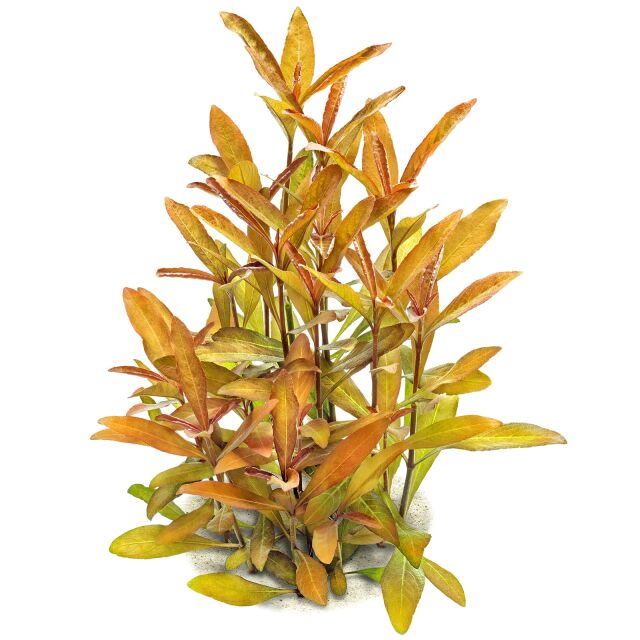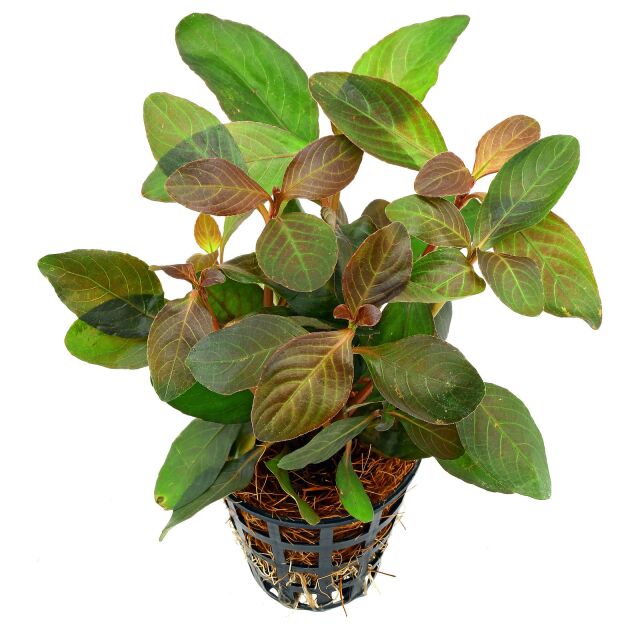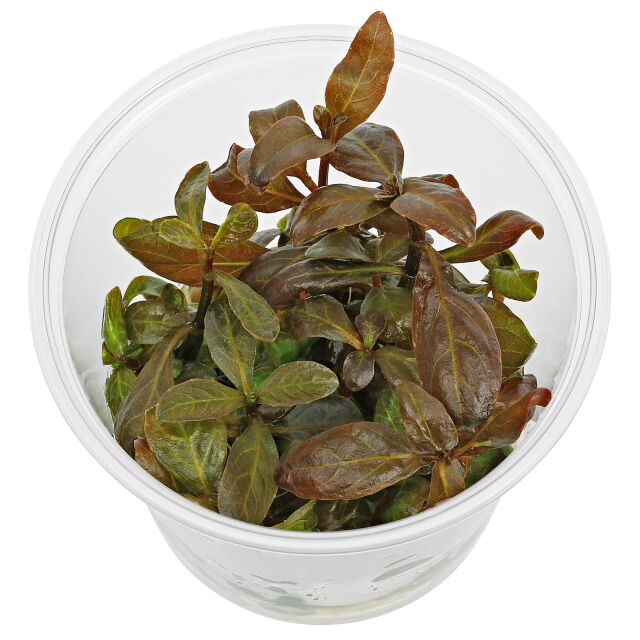



Hygrophila sp. 'Green Olive'
- New Hygrophila species from India
- Reddish brown to dark olive green
- Fast growth
- Recommended for the background
- Not demanding
Item question
We’re here for you!
Please enter your question and e-mail and we’ll contact you as soon as possible. It usually takes us up to 24 hours during business days to respond.
Thank you for your question!
Thank you, we’ll get in touch!
Close window
You already sent us a question.
Please wait a few minutes
Description
This Hygrophila was introduced to Germany in the 2010s by Dennerle from the Goa / Maharashtra region in western India. It is still a little-known rarity in the aquarium hobby. In the wild it occurs in swampy, more or less sunny floodplains. The plant has not yet been determined to species, but is probably related to Hygrophila ringens.
In the terrestrial form, this Hygrophila forms tall, strong, sparsely branched stems with fairly broad elliptical leaves. In the underwater form, the shoots also grow upright with few side shoots. The stem is about 4 mm thick and has internodes about 4 - 6 cm long. The underwater leaves are broadly oval to narrowly elliptical, at least 7 cm long and 1.8 cm wide. The leaf tip is rather blunt, the base of the leaf blade gradually narrows into the leaf stalk, which is about 1 cm long. The leaves have a dark olive-green hue and take on a brownish-red colour at the tip of the shoot in good light.
The plant is not very demanding and can be kept in soft to hard water with pH values of 5 to 8 and temperatures between around 22 and 28 °C, but a good supply of CO2 (20-30 mg/l) and a complete supply of macro and micronutrients are very beneficial for growth. Hygrophila sp. "Green Olive" grows quickly and reaches at least 50 cm in height. Timely pruning encourages branching and the cut shoots can be used as cuttings - as is generally the case with all stem plants.
Hygrophila sp. "Green Olive" looks most harmonious when planted as a group with a larger number of stems in the centre to background. It also grows well emersed in paludariums. Under favourable conditions, especially plenty of light and a good supply of nutrients, you can expect to see blue-purple coloured flowers in the leaf axils of emersed shoots.
General information
Please choose a variant to see more information.
| Item no. |
|
| EAN | |
| Weight | |
| Shipping weight |
Customers ask customers
You have questions about this product? Ask other customer or our support team about this product!